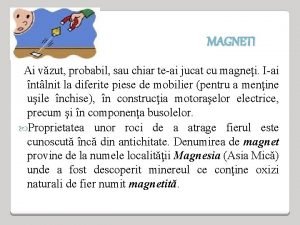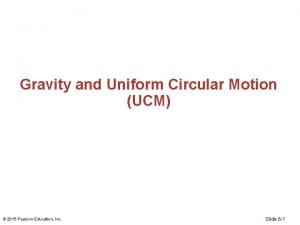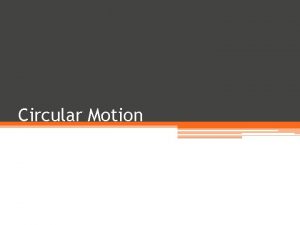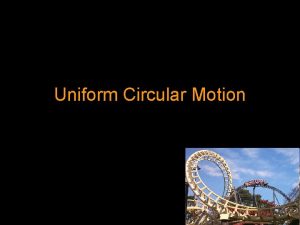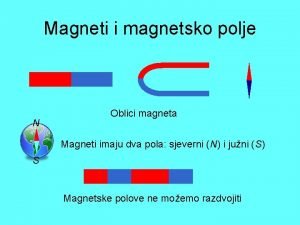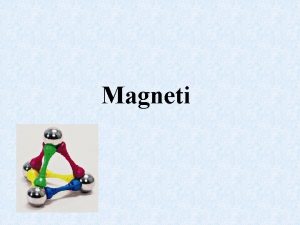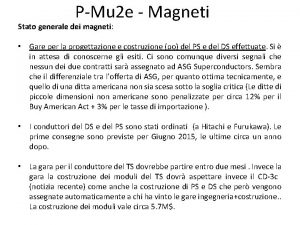Magneti c Force and Circular Motion Mrs Coyle









- Slides: 9

Magneti c Force and Circular Motion Mrs. Coyle AP Physics C

Force on a Charged Particle in a Magnetic Field For a charged particle moving in an external magnetic field with its velocity perpendicular to the field: • The force is always directed toward the center of the circular path • The magnetic force causes a centripetal acceleration, changing the direction of the velocity of the particle

Finding the radius of the circular path • Equate the magnetic and centripetal forces: • Solving for r: – Note: r is proportional to the momentum of the particle and inversely proportional to the magnetic field

More About Motion of Charged Particle • The angular speed of the particle is – The angular speed, w, is also referred to as the cyclotron frequency • The period of the motion is

Force on a charge moving in a magnetic field Radius: Velocity: Frequency: Period:

If the angle between v and B is not 90 o. • The path is a helix • Same equations apply, with

Problem #29. The magnetic field of the Earth at a certain location is directed vertically downward and has a magnitude of 50. 0 μT. A proton is moving horizontally toward the west in this field with a speed of 6. 20 × 106 m/s. (a) What are the direction and magnitude of the magnetic force the field exerts on this charge? (b) What is the radius of the circular arc followed by this proton? Ans: a)4. 96 x 10 -17 N South, b) 1. 29 km

Problem #32. A proton moving freely in a circular path perpendicular to a constant magnetic field takes 1. 00 μs to complete one revolution. Determine the magnitude of the magnetic field. Ans: 6. 56 x 10 -2 T

Problem #39. A singly charged positive ion moving at 4. 60 × 105 m/s leaves a circular track of radius 7. 94 mm along a direction perpendicular to the 1. 80 -T magnetic field of a bubble chamber. Compute the mass (in atomic mass units 1 amu=1. 66 x 10 -27 kg) of this ion. Ans: 4. 97 x 10 -27 kg=2. 99 amu
 Proprietatea fierului de a fi atras de magnet
Proprietatea fierului de a fi atras de magnet Recicladora de ar condicionado automotivo magneti marelli
Recicladora de ar condicionado automotivo magneti marelli Magneti i magnetsko djelovanje električne struje
Magneti i magnetsko djelovanje električne struje Teai sau te-ai
Teai sau te-ai Nascar
Nascar They are mrs garcia and mrs castro
They are mrs garcia and mrs castro They are mrs garcia and mrs castro
They are mrs garcia and mrs castro Mrs. darling was ___________ of mrs. s.
Mrs. darling was ___________ of mrs. s. Coyle method
Coyle method Coyle health and wellbeing
Coyle health and wellbeing



